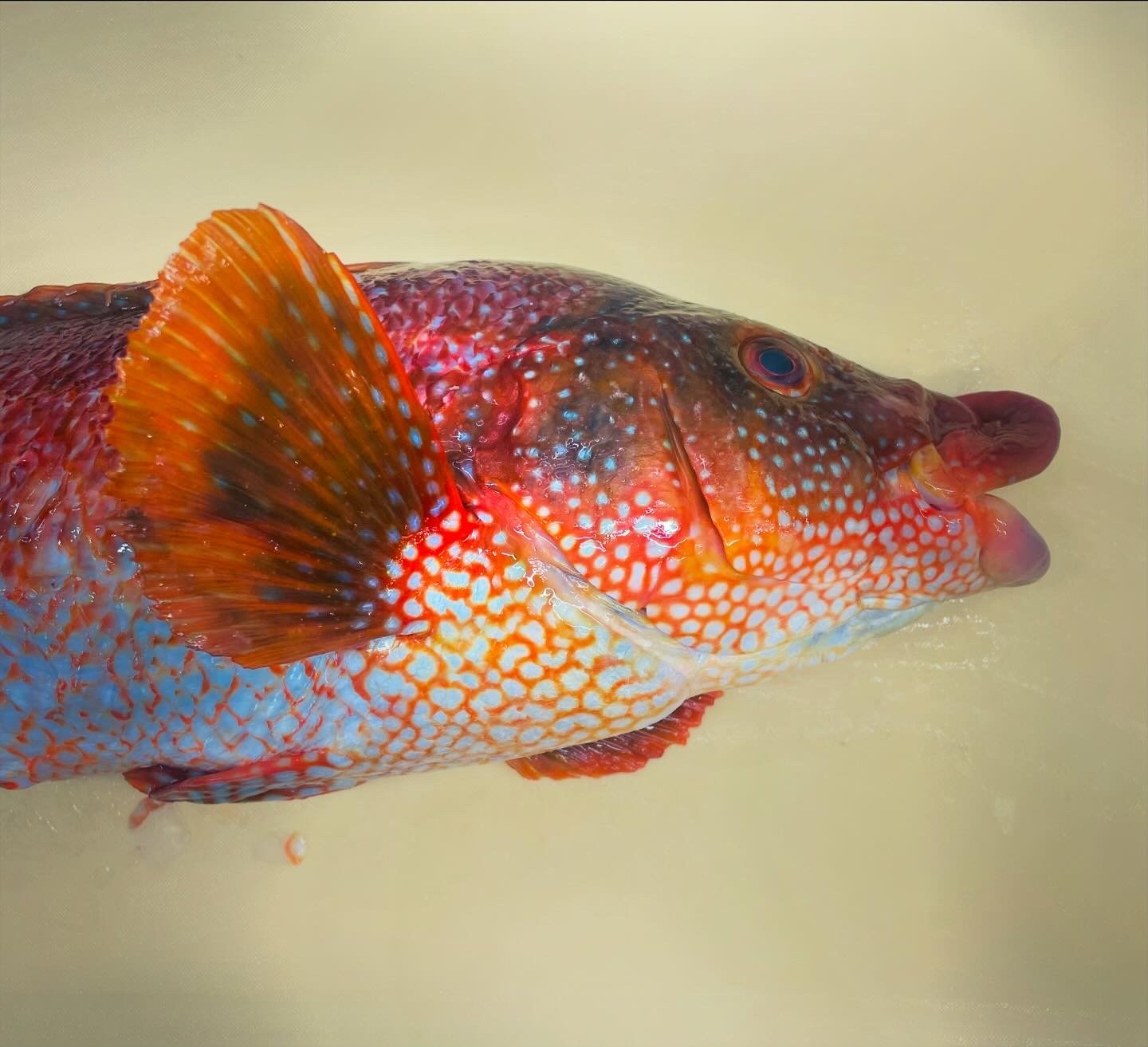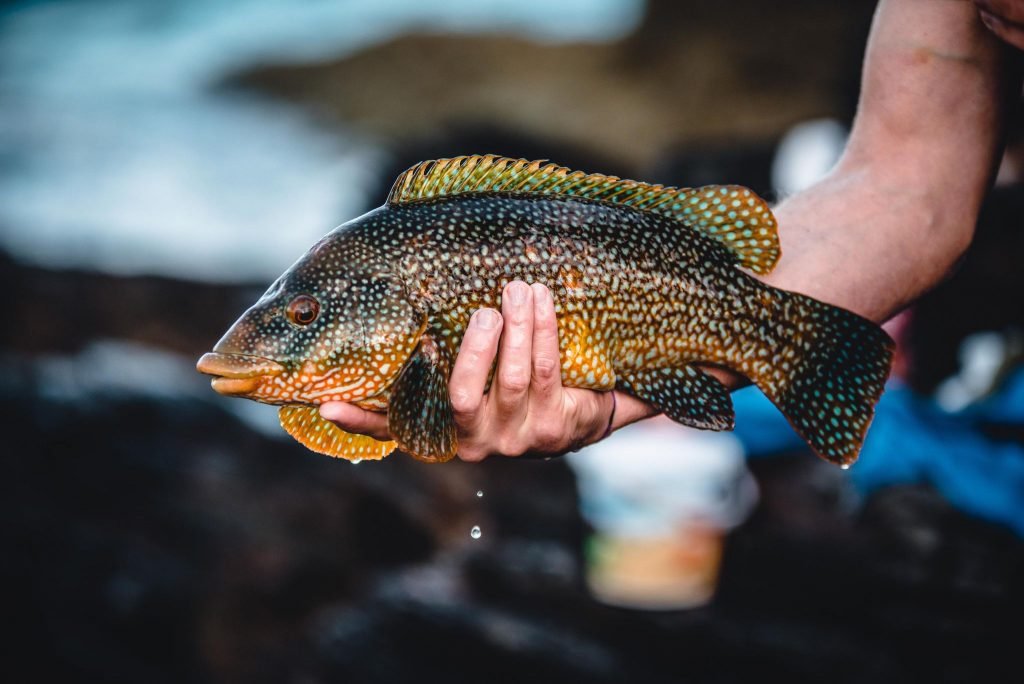
WRASSE
Home | Fish & Recipes | Wrasse
Labrus bergylta
Biology
There are two main species of wrasse in the UK sea: the ballan wrasse and the cuckoo wrasse, as well as a number of other smaller wrasse which is often classed as mini-species. All wrasse species live in rocky areas and are adapted to feed on animals found in this environment such as shellfish and crustaceans. They also tend to live in relatively shallow water and are rarely found offshore, meaning they can be easily targeted by shore-based sea anglers.
Ballan wrasse are the biggest and most common wrasse around the UK coastline. They can grow to around ten pounds in weight, although one of half this size would be a very good catch for a UK sea angler. They inhabit rocky areas and will be found in mixed ground, but the heavier, rocky marks will hold the highest numbers and the biggest fish. Wrasse feed primarily on shellfish. Their thick lips and sharp front teeth are adapted to pull shellfish from the sides of rocks, and they have powerful teeth located further back in their throat to crunch through the shells and get to the flesh inside. They will also feed on crustaceans and can easily consume hardback crabs and small lobsters. Ballan wrasse will come into shallow water and will feed on shellfish attached to submerged cliff faces and inshore rocks. Wrasse also prefer areas where there is heavy kelp and seaweed cover.
Cuckoo wrasse are much more colourful than their ballan cousins and can have colouration more associated with tropical fish than a species found in the temperate waters around the British Isles. They are much smaller than ballan wrasse, only growing to a maximum of around two pounds in weight and specimens caught by UK anglers are usually much smaller than this. They generally prefer slightly deeper water than ballan wrasse and do not come into very shallow inshore waters, although they can still be caught by the shore angler. They have the same kind of prominent lips and teeth as the ballan wrasse and have the same mostly shellfish diet. In many areas populations of ballan and cuckoo wrasse will overlap.
Fishing
Wrasse can be caught with a range of different methods and on a number of different baits. Wrasse are daytime feeders, lying dormant on the seabed or hidden away between gaps in rocks or in crevices during darkness. They can be caught all year round, but catches from the shore are generally better in spring, summer and early autumn, as cold weather will send the wrasse into deeper offshore waters. Rough, choppy seas and bad weather can also see wrasse disappear into their hiding places and bites dry up.
Wrasse will scour and scavenge on the seabed and can therefore be caught with baits presented on conventional rigs. Bottom fishing is best with hooks which are around size 1/0 or thereabouts. Wrasse do not have large mouths but they can attack baits aggressively and if hooks are too small wrasse can take them all of the way down into their body where they will be difficult (or impossible) to remove.
Eating
A fish for the more adventurous chef, oriental style dishes will celebrate the delicate flesh of Wrasse. The scales are best cut with a very sharp knife, see the video below by Josh Niland one of the best in the trade showcasing how to.
Wrasse is great for dry aging if you are set up for it, also great for sashimi, ceviche, creamy dishes and stews.
CLICK ON THE RECIPES TO ENLARGE





